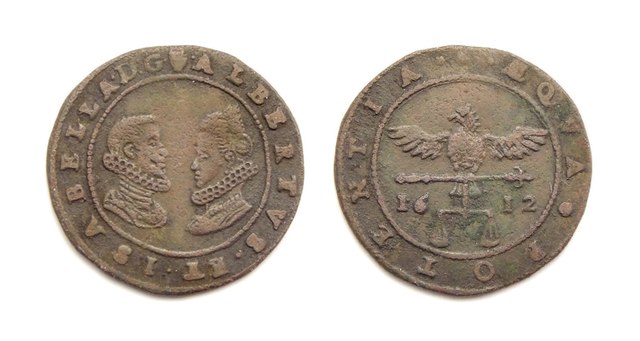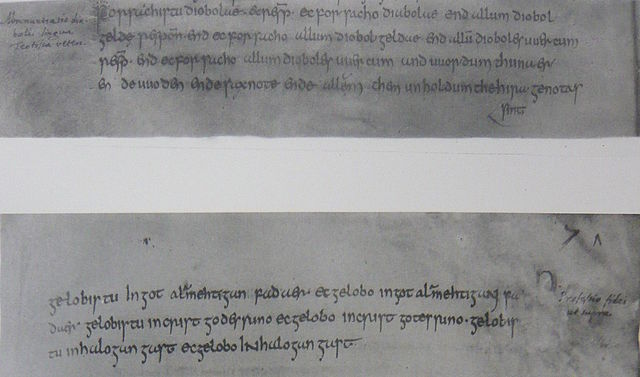Spanish Netherlands was the Habsburg Netherlands ruled by the Spanish branch of the Habsburgs from 1556 to 1714. They were a collection of States of the Holy Roman Empire in the Low Countries held in personal union by the Spanish Crown. This region comprised most of the modern states of Belgium and Luxembourg, as well as parts of northern France, the southern Netherlands, and western Germany with the capital being Brussels. The Army of Flanders was given the task of defending the territory.
Jeton with portraits of the Archdukes Albert VII, Archduke of Austria and Infanta Isabella of Spain, struck in Antwerp 1612. Obv: Portraits of Albert and Isabella. Rev: Eagle holding balance, date 1612.
Dutch is a West Germanic language, spoken by about 25 million people as a first language and 5 million as a second language and is the third most spoken Germanic language. In Europe, Dutch is the native language of most of the population of the Netherlands and Flanders. In South America, it is the native language of the majority of the population of Suriname, and spoken as a second language in the polyglot Caribbean island countries of Aruba, Curaçao and Sint Maarten. All these countries have recognised Dutch as one of their official languages, and are involved in one way or another in the Dutch Language Union. Dutch Caribbean municipalities have Dutch as one of the official languages too. Up to half a million native speakers reside in the United States, Canada and Australia combined, and historical linguistic minorities on the verge of extinction remain in parts of France and Germany.
The Utrecht baptismal vow
Title page of the Statenvertaling (1637) reads: Biblia ... Uyt de Oorspronckelijcke talen in onse Neder-landtsche tale getrouwelijck over-geset. (English: From the Original languages into our Dutch language faithfully translated.
Indonesia did not adopt the Dutch language after independence. However the Indonesian language absorbed a lot of Dutch vocabulary into its language. Seen here is the kantor pos (from Dutch postkantoor), meaning post office.
Standard Dutch used in a 1916 ad in South Africa before Afrikaans replaced Dutch for use in media





